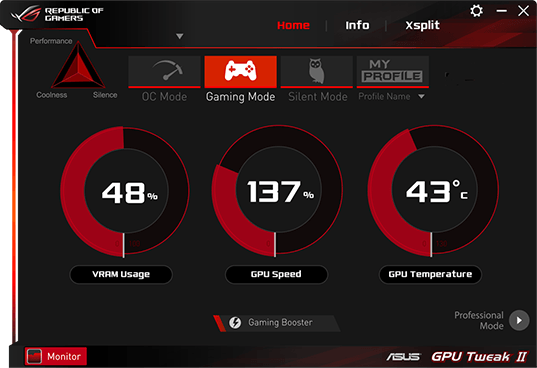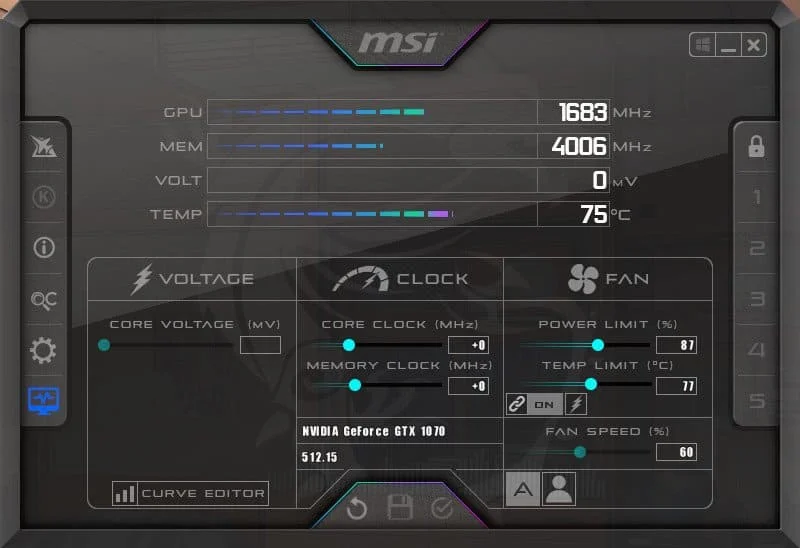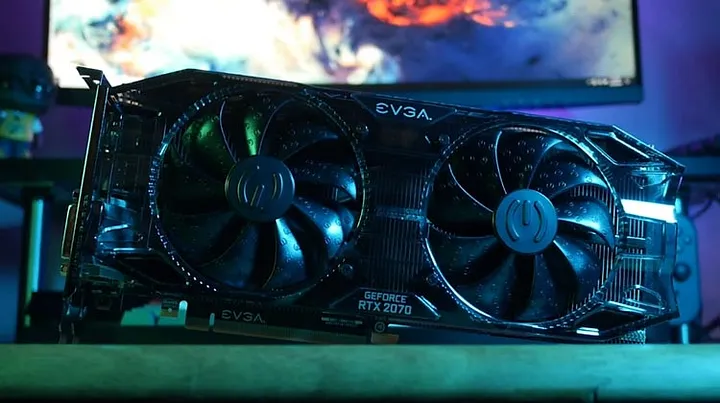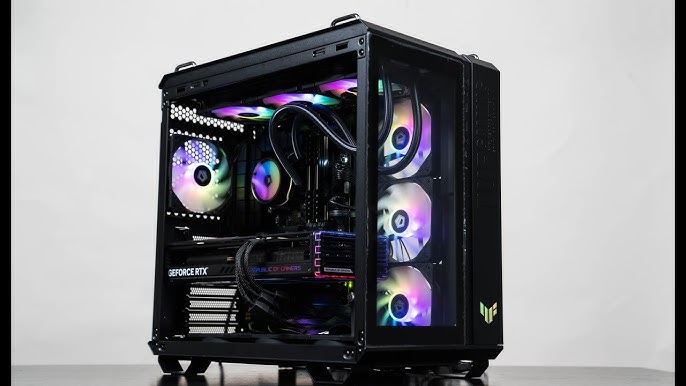During intense gaming, my GPU hit 80°C, but adding a case fan and cleaning dust dropped it to 70°C. Staying below 85°C ensures stable performance and a longer GPU lifespan.
Your GPU temperature should remain between 30°C and 50°C when not in use, and between 60°C and 85°C during intensive tasks. Above 90°C is a concern and may require better cooling or adjustments to prevent overheating and ensure long-term performance.
“Have you ever asked yourself what should my GPU temperature be? Understanding the right temperature range can improve gaming and system efficiency. Dive in to discover safe limits, cooling tips, and how to protect your GPU!”
Understanding GPU Temperatures:
1. Normal Operating Range:
During light tasks like browsing, GPU temperatures should stay between 30°C and 50°C. For gaming or moderate workloads, 60°C to 85°C is safe and expected.
2. High-Performance Scenarios:
Heavy tasks like gaming at ultra settings or rendering may push temperatures to 85°C to 90°C. Occasional spikes are fine, but sustained high temperatures require better cooling.

3. Safety Mechanisms:
GPUs use thermal throttling to reduce performance if temperatures exceed 95°C, protecting the hardware. Staying below this limit ensures better performance and lifespan.
Also Read: GPU Only Works In Second Slot – Isolate The Problem!
What Is The Maximum Temperature For A GPU?
The maximum GPU temperature depends on the model. Most NVIDIA GPUs can handle up to 93°C to 95°C, while AMD GPUs tolerate up to 100°C to 110°C. However, running at these extremes isn’t ideal. For safety and longevity, keep your GPU below 85°C during heavy use to avoid overheating or performance issues.
Factors Affecting GPU Temperature:
1. Workload Type:
Light tasks keep GPU temperatures around 30°C to 50°C, while gaming or rendering raises them to 60°C to 85°C. Overclocking generates even more heat.
2. Cooling Solution:
Stock coolers suit light use, but aftermarket or liquid cooling is better for heavy workloads. Good airflow also helps manage heat.
How to Monitor GPU Temperatures?
1. MSI Afterburner:
MSI Afterburner is a popular tool that lets you monitor GPU temperature, usage, and fan speeds in real-time. It also allows you to adjust cooling settings for better temperature management.
2. HWMonitor:
HWMonitor provides detailed information on your GPU’s temperature, power usage, and other components. It’s a simple tool for checking system health.
3. NVIDIA GeForce Experience/AMD Radeon Software:
Both NVIDIA and AMD offer built-in software to monitor GPU temperatures and optimize settings. They provide easy-to-read temperature stats and allow you to adjust settings for better performance.
4. Windows Task Manager:
Windows Task Manager shows basic GPU usage and temperature under the “Performance” tab. It’s a quick and easy way to keep an eye on your GPU’s performance without extra software.
Also Read: CUDA Setup Failed Despite GPU Being Available – Complete Guide 2024!
What Should My GPU Temperature Be?
Your GPU temperature should typically stay between 30°C to 50°C when idle. During gaming or heavy tasks, it can rise to 60°C to 85°C, which is normal. Temperatures above 90°C may indicate poor cooling, and anything over 100°C can risk damage, triggering safety features like thermal throttling.

How To Keep Your GPU Cool?
1. Ensure Proper Airflow:
Clean your PC case regularly to remove dust. Arrange fans for efficient airflow—intake fans bring in cool air, and exhaust fans push out hot air.
2. Upgrade Cooling Solutions:
Consider aftermarket GPU coolers or a liquid cooling system. These options provide better heat dissipation compared to stock cooling setups.
3. Adjust Fan Speeds:
Use tools like MSI Afterburner to create custom fan curves. Increase fan speeds when the GPU gets hotter to keep temperatures in check.
4. Replace Thermal Paste:
Old thermal paste loses its effectiveness. Reapply high-quality thermal paste to improve heat transfer between the GPU chip and the heatsink.
5. Manage Workload and Settings:
Reduce graphics settings in games or applications to lower GPU load. Avoid overclocking if cooling solutions cannot handle the extra heat.
When To Worry About GPU Temperatures?
You should worry about GPU temperatures if they exceed 85°C to 90°C during normal use or stay above 100°C for extended periods. High temperatures can cause performance issues, crashes, or permanent damage. If your GPU frequently reaches these levels, consider improving cooling or reducing workload intensity.
What Is The Safe Temperature For GPU Underload Or High Gaming?
The safe GPU temperature during high gaming or heavy load is typically between 60°C and 85°C. If your GPU temperature stays within this range, it is operating normally. Temperatures above 85°C can be concerning, and anything over 90°C may lead to thermal throttling or potential hardware damage.

Is It Ok For My GPU To Have High Temperature While Benchmarking?
Yes, it’s normal for your GPU to have higher temperatures while benchmarking because it’s running at maximum performance. Temperatures around 85°C to 90°C are common in such scenarios. However, if temperatures exceed 90°C, it’s a sign of potential overheating, and you may need better cooling solutions.
Also Read: PS5 GPU Equivalent – Find Your GPU Match Now!
How To Tell If A GPU Is overheating?
You can tell if your GPU is overheating if you notice consistent high temperatures above 85°C, performance drops, or screen artifacts like flickering. Your system may also freeze, crash, or throttle, where the GPU reduces its speed to cool down. Monitoring software like MSI Afterburner can help track temperatures.
What Are Normal GPU Temperatures Under load?
Normal GPU temperatures under load, such as gaming or rendering, usually range between 60°C and 85°C. If the temperature stays within this range, the GPU is functioning well. Temperatures above 85°C may indicate cooling issues, and anything over 90°C can risk performance throttling or potential damage.
Is 60 Degrees Celsius A Good GPU Temperature?
A temperature of 60°C is considered safe and optimal for your GPU, particularly during activities like gaming that require moderate to heavy usage. It indicates the GPU is working efficiently without overheating. Temperatures in the range of 30°C to 70°C are ideal for most GPUs, ensuring good performance and longevity.

Is 80 Degrees Celsius Hot For A GPU 3060?
No, 80°C is not hot for an RTX 3060 under load; it’s within the safe operating range. However, it’s close to the upper limit for optimal performance. If temperatures consistently go higher than 85°C, consider improving cooling or airflow to ensure the GPU remains efficient and avoids potential issues.
Also Read: Is Rust CPU Or GPU Heavy – Maximize Rust Efficiency Today!
Is 90 Degrees Celsius Hot For A GPU?
Yes, 90°C is considered hot for a GPU. While many GPUs can handle brief spikes to this temperature, prolonged operation at 90°C can cause thermal throttling, reduced performance, or damage over time. Ideally, aim to keep GPU temperatures below 85°C during heavy use to ensure safe and efficient operation.
How Do Power Settings Affect GPU Temperature?
Power settings impact GPU temperature by controlling its performance levels. High-performance settings keep the GPU running at full speed, even during light tasks, increasing heat. Balanced or energy-saving modes lower performance during idle or light use, reducing heat generation and keeping GPU temperatures cooler overall.
Can Switching To A Smaller PC Case Increase GPU Temperature?
Yes, switching to a smaller PC case can increase GPU temperature due to limited airflow and cramped space. Smaller cases often trap heat and make it harder for fans to cool the GPU effectively. To prevent overheating, ensure good ventilation, use high-quality fans, and organize cables to improve airflow.

Can Installing More Case Fans Lower GPU Temperature?
Yes, installing more case fans can lower GPU temperatures by improving airflow inside the PC. Intake fans bring in cool air, while exhaust fans remove hot air, preventing heat buildup. Proper fan placement and airflow direction can significantly reduce GPU and overall system temperatures, especially during heavy workloads or gaming.
Also Read: Is 60 Degrees Celsius Hot For A GPU – Keep Your GPU Cool!
FAQs:
1. Can A Dirty PC Case Increase GPU Temperature?
Yes, dust buildup in your PC case can block airflow and clog GPU fans, causing higher temperatures. Regular cleaning helps maintain proper cooling.
2. Do RGB lights on my GPU affect its temperature?
RGB lighting has minimal impact on GPU temperatures. However, if additional power is drawn for RGB features, it might generate a tiny amount of extra heat, which is negligible.
3.Does the type of thermal paste affect GPU cooling?
Yes, high-quality thermal paste provides better heat transfer between the GPU chip and the heatsink, potentially lowering temperatures by several degrees.
4. Can switching to a smaller PC case increase GPU temperature?
Yes, smaller cases have less room for airflow, which can lead to higher GPU temperatures, especially if ventilation is poor or the case is tightly packed.
5. Do different GPU brands affect temperature?
Yes, different manufacturers (e.g., ASUS, MSI, Gigabyte) use varied cooling designs. Some brands offer better cooling solutions, like larger heatsinks or additional fans, which can result in lower temperatures.
6. Is Water Cooling Better Than Air Cooling For GPUs?
Water cooling is generally more efficient at maintaining lower GPU temperatures, especially for high-performance or overclocked GPUs, compared to air cooling.
7.Can Using An External Monitor Affect GPU Temperature?
Yes, connecting an external monitor can increase GPU workload, especially if you’re running at a higher resolution or refresh rate, potentially raising its temperature.
Conclusion:
In conclusion, what should my GPU temperature be depends on its workload. A temperature range of 30°C to 50°C when idle and 60°C to 85°C under load is normal. Anything above 90°C is concerning. Maintaining proper cooling, airflow, and monitoring tools can help keep your GPU temperature safe, ensuring better performance and longer lifespan.
Related Posts:
- Is 60 Degrees Celsius Hot For A GPU – Keep Your GPU Cool!
- What Should GPU Temp Be While Gaming – Keep GPU Cool Now!
- What Temperature Is Bad For GPU – Protect Your GPU Today!
- Is CS2 CPU Or GPU Intensive – Find Performance Balance!

